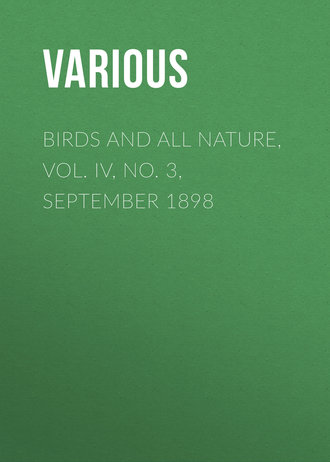Birds and all Nature, Vol. IV, No. 3, September 1898
 полная версия
полная версияBirds and all Nature, Vol. IV, No. 3, September 1898
Жанр: учебная и научная литературазарубежная образовательная литератураприрода и животныебиологиязоологиязнания и навыки
Язык: Английский
Год издания: 2017
Добавлена:
Настройки чтения
Размер шрифта
Высота строк
Поля









